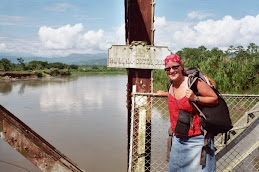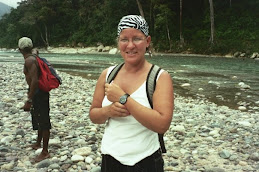Here’s the thing about alopecians: We’re not all the same.
Some are born without hair. Some lose it so early in life they don’t remember ever having hair—or losing it. Some lose their hair in childhood. Some lose it as teenagers. Some lose it as adults. Some lose it in patches that can be covered up. Some lose it all over their bodies and don’t even have a single nose hair. Some lose it in patches for awhile, then progress to total hair loss. Some respond to current treatments such as steroid injections. Some respond to alternative medicines. Some don’t respond to any treatment at all. Some respond until they don't. Some get their hair back for no known reason. Some get their hair back every so many years. Some get their hair back during pregnancy. Some feel comfortable talking about it. Some never talk about it. Some feel comfortable only in wigs, some in scarves, some in bare scalps, some in tattooed scalps. Some can't imagine the possibility of ever being happy and hairless at the same time. Some blame all their problems in life on alopecia. Some do arrive at true self-acceptance. Some feel sexy and beautiful without hair. Some feel undateable because of their hairlessness. Some have met and married life partners. Some think maybe we shouldn’t be so self-accepting or we’ll never seek a cure. Some worry that if we joke about our bald heads, we’re not taking the disease seriously enough.
Because we have such different experiences, we do not always present a united front. Maybe that’s a good thing. Discussions and debates can challenge our own beliefs and offer alternative perspectives. When done respectfully, they can help us grow.
I cannot—and I do not—speak for all alopecians. I am just one person among the millions worldwide with alopecia. I’m on my own journey—a journey, I must add, that involves frequent evolution in thought and beliefs. Today, sixteen years after losing my hair, I’m not sure I’d welcome my hair back. I don’t even own a hairbrush, much less a curling iron or blow dryer. I rather enjoy being able to get ready quickly without having to bother with hair. I do not miss the hefty price tags of foil colors and perms and styles at fine hair salons. I have found alternative ways to feel feminine: I wear dresses, I get regular mani/pedis, and every once in awhile I wear cute heels that hurt my feet. I’m not sure I still believe a cure is necessary—a contentious viewpoint in some alopecia circles. I hesitate to publicize this viewpoint because the last thing I want to be is disrespectful.
I honestly believe the problem doesn’t lie in the loss of hair but in society’s lack of awareness and acceptance of it. I believe that bald can be beautiful. I believe that my fellow alopecians are some of the most beautiful people I've ever met. I believe there’s a place for hairlessness in the world, just as I believe there's a place for different body shapes, a variety of eye colors, a range of foot sizes. I believe in embracing our individuality and that our differences are what make us beautiful. I believe that the cultural definition of beauty just may shift one day to include hairlessness, just as it has shifted to include a bigger booty and thicker thighs.
But I also remember when I wasn't ready, or willing, or able to believe these things. So I welcome the dialogue. I agree to disagree. I am open to new ideas. And old ones. In the meantime, I place my hope on society rather than research, on humanity as opposed to a cure. And I do my best to be the change I wish to see in the world.














